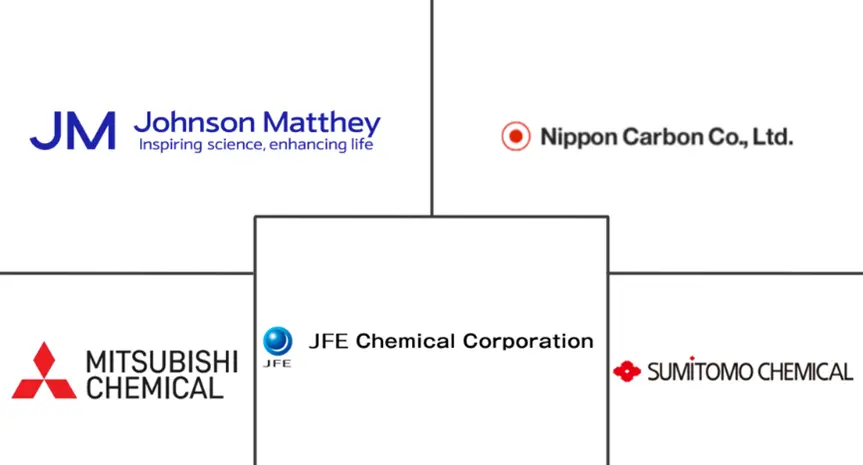Battery Anode Materials Market Size and Share
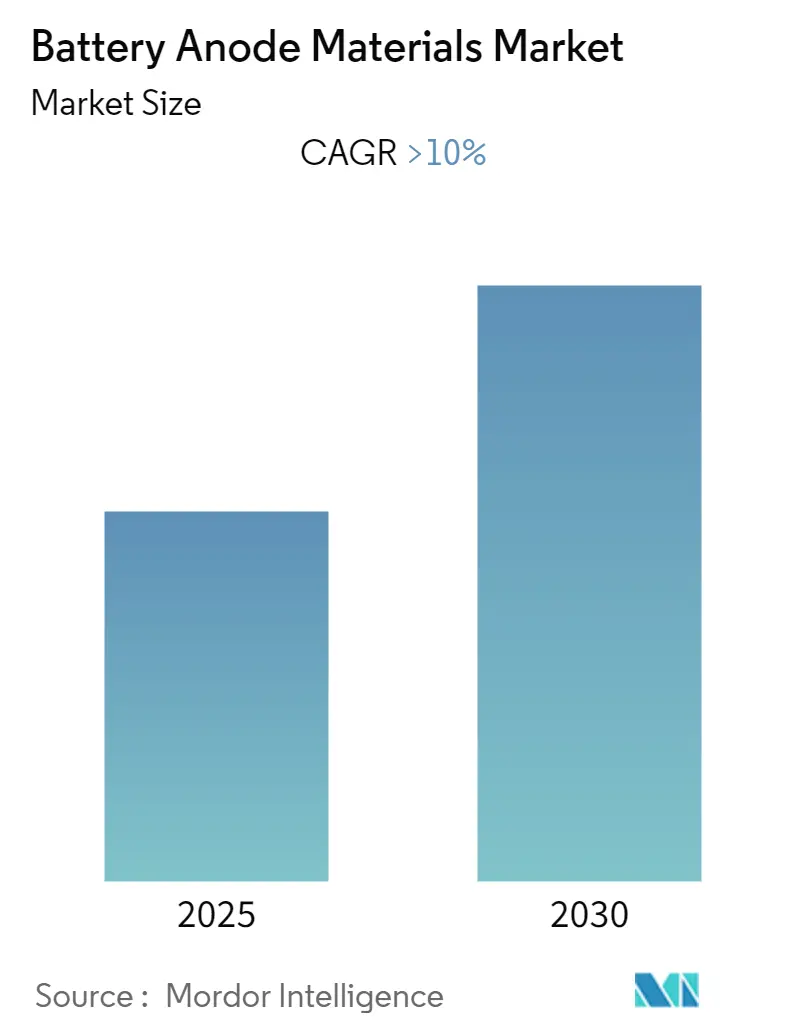
Battery Anode Materials Market Analysis by Mordor Intelligence
The Battery Anode Materials Market is expected to register a CAGR of greater than 10% during the forecast period.
Unfavorable conditions arising due to the COVID-19 outbreak hindered the growth of the market in the past year. Also, many end-user industries were impacted due to pandemics. That restricted the growth of the market. However, in 2022, the situation is coming back on track, and now the market is stable and growing steadily.
One of the major factors driving the battery anode materials market is the increasing demand from the automotive sector.
However, the stringent safety regulations for batteries through storage and transportation are likely to hinder the expansion of the studied market.
Research and development of silicon and the lithium-based anode is a major opportunity to drive the market in the future.
The Asia-Pacific region accounts for the highest market share due to increasing demand in countries like China, Japan, and South Korea.
Global Battery Anode Materials Market Trends and Insights
Rising Demand in Automotive Industry
The market for electric vehicles is expected to grow in the future, driven by the adoption of various environmental norms and emission regulations.
Owing to environmental concerns and awareness about clean and sustainable fuel, there is a rise in the demand for electric vehicles.
The anode material in the battery determines how fast the vehicle battery can be charged and, with an increase in the energy density, helps to extend the driving range per charge.
According to a study, the number of electric cars on the world's roads by the end of 2021 was ~16.5 million, triple the amount in 2018.
According to the U.S. Department of Energy, in the United States, sales of new light-duty plug-in electric vehicles, including all-electric vehicles (EVs) and plug-in hybrid electric vehicles (PHEVs), nearly doubled from 308,000 in 2020 to 608,000 in 2021. EV sales accounted for 73% of all plug-in electric vehicle sales in 2021.
All the aforementioned factors will likely propel the demand for battery anode materials during the forecast years.
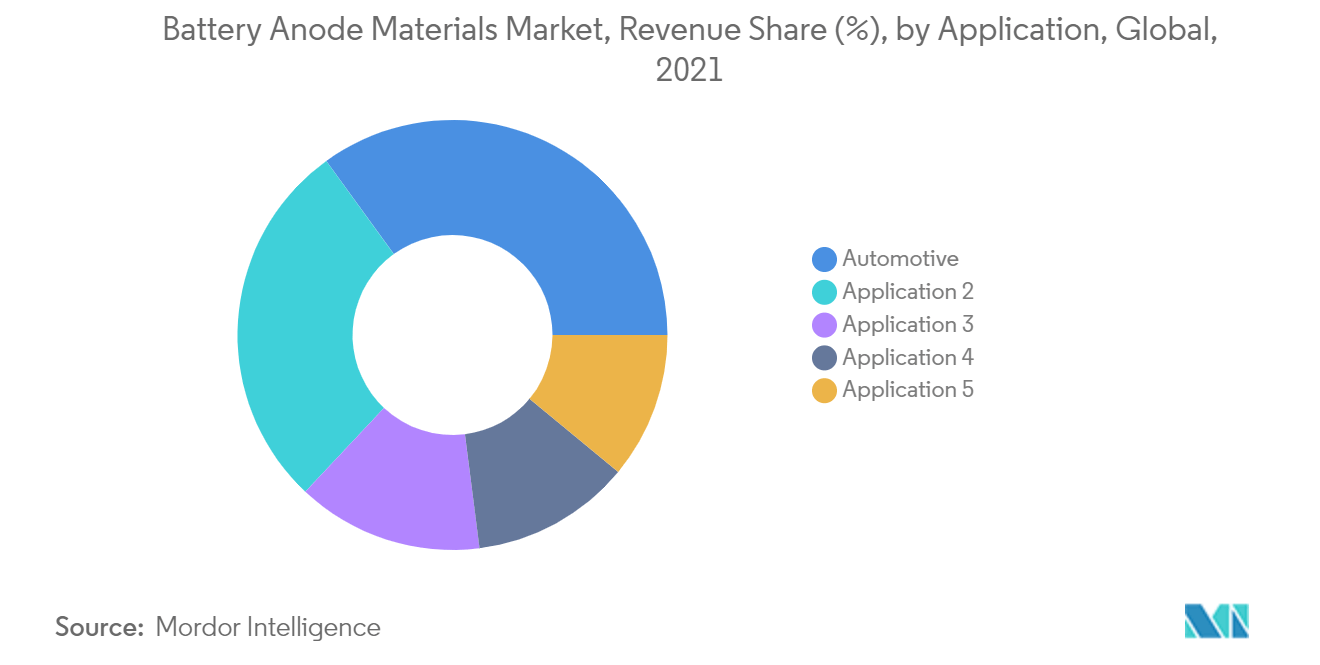
Asia-Pacific Region to Dominate the Market
The Asia-Pacific region is expected to dominate the market. In the region, China is the largest economy in terms of GDP. China and India are among the fastest emerging economies in the world.
China is the largest producer & exporter of Consumer Electronics in the world. It is the world's most extensive electronics manufacturing ecosystem with a labor force of electrical goods workers of close to 150 million.
Furthermore, electric car sales in China were ~3.3 million, nearly triple in 2021 compared to 2018.
As per the India Brand Equity Foundation, overall, in 2021, 329,190 EVs were sold in India, indicating a 168% YoY growth over last year's sales of 122,607 units.
Moreover, according to NITI Aayog and Rocky Mountain Institute (RMI), India's EV finance industry is likely to reach USD 50 billion by 2030.
Due to all the above-mentioned factors, the Asia-Pacific region is expected to see an increase in demand during the forecast period.
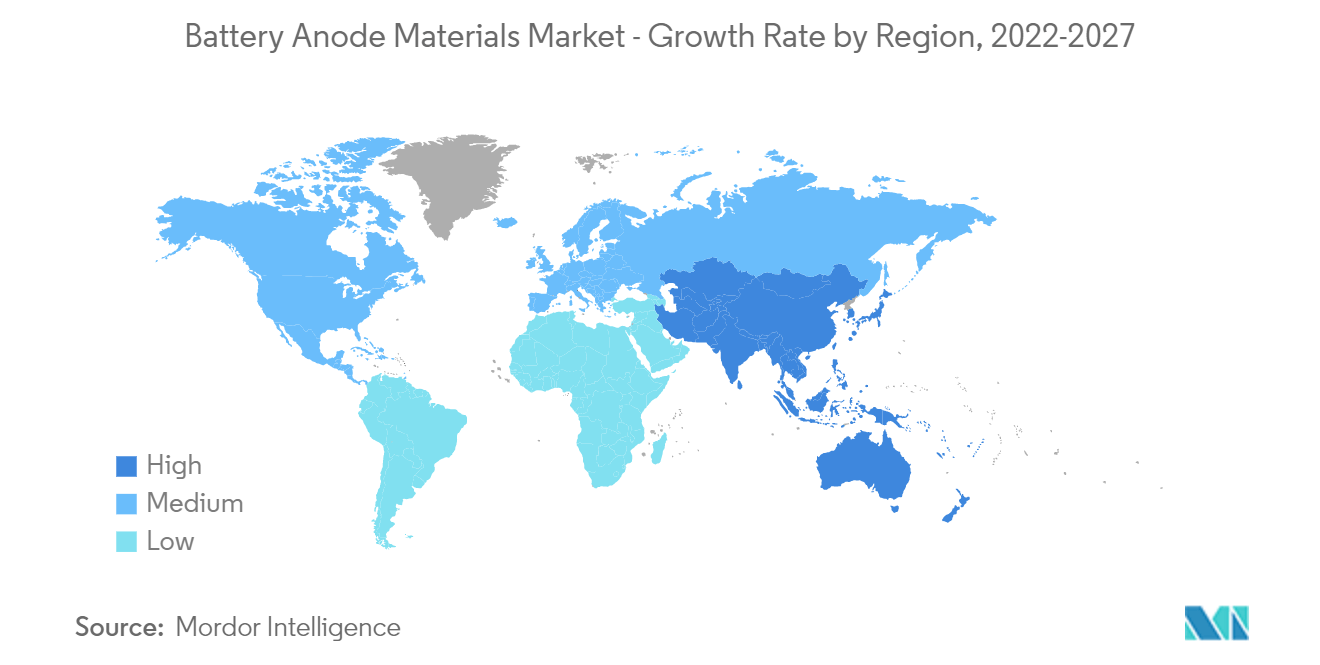
Competitive Landscape
The battery anode materials market is partially consolidated in nature. Some of the major players in the market include (not in any particular order) Johnson Matthey, Mistubishi Chemical Corporation, JFE Chemical Corporation, Sumitomo Chemical Co., Ltd., and Nippon Carbon Co Ltd., among others.
Battery Anode Materials Industry Leaders
-
Johnson Matthey
-
Mistubishi Chemical Corporation
-
JFE Chemical Corporation
-
Sumitomo Chemical Co., Ltd
-
Nippon Carbon Co., Ltd
- *Disclaimer: Major Players sorted in no particular order
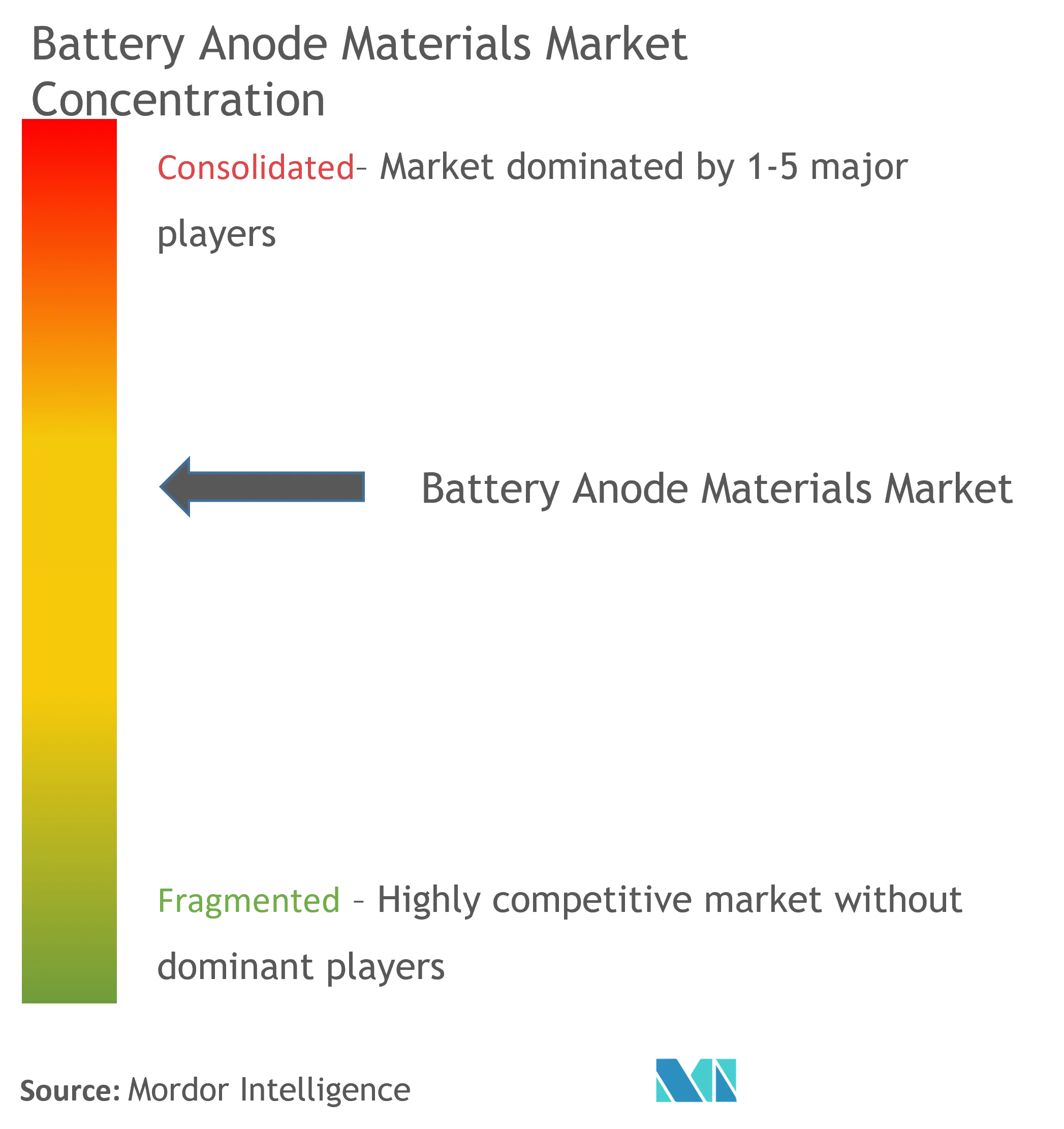
Recent Industry Developments
In May 2022, Nano One Materials Corp., a clean technology innovator in battery materials, announced that it had entered into a binding agreement to acquire all the outstanding shares of Johnson Matthey (JM) Battery Materials Ltd.
In Apr 2020, Tohoku University and Sumitomo Chemical revealed a new mechanism for preventing deterioration of aluminum anode during cyclic battery reactions.
Global Battery Anode Materials Market Report Scope
Anode materials are required to be electrochemically active toward the oxidation reaction. To be active as an anode, the material must be electronically conducting under reducing environments, be chemically and physically stable, be a good electrocatalyst, and not react with other cell materials. The battery anode materials market is segmented by material (lithium, silicon, graphite, and other materials), application (consumer electronics, automotive, industrial, telecommunication, and other applications), and geography (Asia-pacific, North America, Europe, South America, and Middle-East & Africa). The report also covers the market sizes and forecasts for the battery anode materials market in 15 countries across the major regions. For each segment, the market sizing and forecasts have been done on the basis of volume (kilo tons).
| Lithium |
| Silicon |
| Graphite |
| Other Materials |
| Consumer Electronics |
| Automotive |
| Industrial |
| Telcommunication |
| Other Applications |
| Asia-Pacific | China |
| India | |
| Japan | |
| South Korea | |
| Rest of Asia-Pacific | |
| North America | United States |
| Canada | |
| Mexico | |
| Europe | Germany |
| United Kingdom | |
| Italy | |
| France | |
| Rest of Europe | |
| South America | Brazil |
| Argentina | |
| Rest of South America | |
| Middle-East and Africa | Saudi Arabia |
| South Africa | |
| Rest of Middle-East and Africa |
| Materials | Lithium | |
| Silicon | ||
| Graphite | ||
| Other Materials | ||
| Application | Consumer Electronics | |
| Automotive | ||
| Industrial | ||
| Telcommunication | ||
| Other Applications | ||
| Geography | Asia-Pacific | China |
| India | ||
| Japan | ||
| South Korea | ||
| Rest of Asia-Pacific | ||
| North America | United States | |
| Canada | ||
| Mexico | ||
| Europe | Germany | |
| United Kingdom | ||
| Italy | ||
| France | ||
| Rest of Europe | ||
| South America | Brazil | |
| Argentina | ||
| Rest of South America | ||
| Middle-East and Africa | Saudi Arabia | |
| South Africa | ||
| Rest of Middle-East and Africa | ||
Key Questions Answered in the Report
What is the current Battery Anode Materials Market size?
The Battery Anode Materials Market is projected to register a CAGR of greater than 10% during the forecast period (2025-2030)
Who are the key players in Battery Anode Materials Market?
Johnson Matthey, Mistubishi Chemical Corporation, JFE Chemical Corporation, Sumitomo Chemical Co., Ltd and Nippon Carbon Co., Ltd are the major companies operating in the Battery Anode Materials Market.
Which is the fastest growing region in Battery Anode Materials Market?
Asia-Pacific is estimated to grow at the highest CAGR over the forecast period (2025-2030).
Which region has the biggest share in Battery Anode Materials Market?
In 2025, the Asia-Pacific accounts for the largest market share in Battery Anode Materials Market.
What years does this Battery Anode Materials Market cover?
The report covers the Battery Anode Materials Market historical market size for years: 2019, 2020, 2021, 2022, 2023 and 2024. The report also forecasts the Battery Anode Materials Market size for years: 2025, 2026, 2027, 2028, 2029 and 2030.
Page last updated on:
Battery Anode Materials Market Report
Statistics for the 2025 Battery Anode Materials market share, size and revenue growth rate, created by Mordor Intelligence™ Industry Reports. Battery Anode Materials analysis includes a market forecast outlook for 2025 to 2030 and historical overview. Get a sample of this industry analysis as a free report PDF download.
